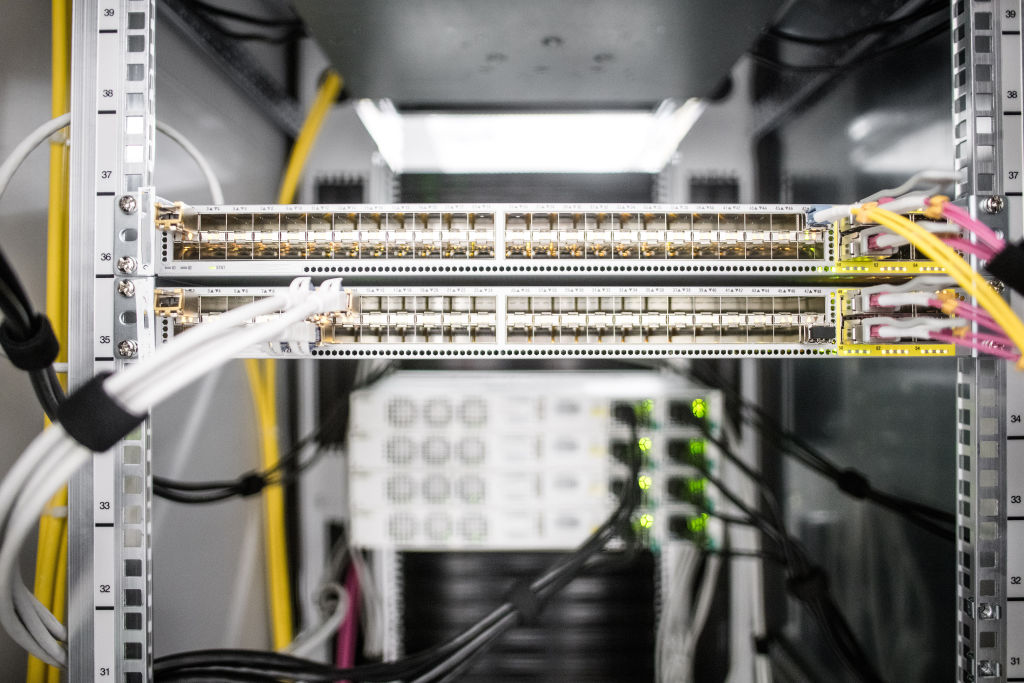Data Center Providers Adjust to Doing Business RemotelyData Center Providers Adjust to Doing Business Remotely
From cybersecurity and physical infrastructure to sales, the colocation industry shifts to working from home.
April 8, 2020

While data center operators in the US aren’t required to send people home – they’re considered critical services – they have been keeping onsite staff to a minimum to keep their personnel healthy and able to run the infrastructure as the COVID-19 pandemic runs its course.
Commercial data center providers have also reduced customer foot traffic in their facilities, and they generally have enough tools and “remote-hands” services in place to allow their customers to monitor and manage their infrastructure remotely. But with their own onsite personnel kept minimal, they’re relying on remote-work tools themselves as well, for everything from managing the facilities to sales.
Fortunately, the concept of remote data center management isn't new, said Bob Laliberte, a senior analyst at Enterprise Strategy Group. "They don't want to come in at 2 a.m. in the morning if they get a phone call," he told DCK.
One category of tools helping accomplish this is DCIM software (DCIM stands for “data center infrastructure management”). Many of these tools bring together everything needed to manage both IT equipment and facilities infrastructure, such as power and cooling systems. Modern DCIM platforms support secure remote access, allowing colocation providers’ employees to do much of the work from practically anywhere.
But there are still some things that require physical presence onsite, Laliberte said. "If a hard drive fails, most organizations will have it set up so that operations will continue. But at some point the hard drive will have to be replaced.”
Staff and Sales Meetings Go Virtual
About two-thirds of Flexential, a North Carolina-based colocation provider, is now remote.
"Our non-essential employees are working from home," said Patrick Doherty, the company's chief revenue officer.
They are using video conferencing for meetings and one-on-ones to stay connected, he told DCK. "The various teams are doing a great job of creating personal experiences through video coffee chats, pet parades, and team meetings."
The pandemic has been particularly challenging for sales staff, because they can no longer visit potential customers or give in-person data center tours.
But "we have created virtual tours and video tours, where our current and potential customers can see inside our four walls, at the same level of detail as they would during a physical walk through," Doherty said.
Some customers are committed to working on their technology infrastructure despite the crisis, he said, explaining the continued demand for tours. Others are seeing demand on their infrastructure grow because of the increase in reliance on digital services.
Security and Infrastructure Management
Employees of Florida-based colocation provider Cyxtera Technologies have been accessing company systems using solutions by AppGate, Leo Taddeo, the company’s CISO, said. AppGate used to be part of Cyxtera but was recently spun out.
The company has received letters from the Department of Homeland Security allowing its personnel to travel to its facilities, Taddeo said. But only essential employees, vendors, and customers are allowed onsite, and they are screened before being let in.
Like other operators, Cyxtera has been keeping onsite staff separated from each other, observing social-distancing rules; it’s increased workspace cleaning and restricted access to common areas, he said.
QTS Realty Trust has tools in place to manage about 95 percent of all tasks related with power and cooling system management, Brent Bensten, CTO of products for the colocation provider with 7 million square feet of data center space in the US and Europe, said.
Staff "can do almost everything remotely," he said. "We don't have to go into the space and put our employees at risk except for physical things like changing a tile or redirecting air flow. But both of those are rare occurrences."
The Dream of the Lights-Out Data Center
For years, there has been talk of "lights-out" data centers, where everything is fully automated and humans never have to set foot on the premises.
While there are examples in manufacturing and logistics where operations require minimal staff or no staff at all, the same cannot be said for data centers.
"There's always going to be some things that require a human to do," Laliberte said.
Growth in hyperscale and edge computing infrastructure has moved the needle on automation, and as the industry develops further, hardware standardization and automation will move the needle further.
Perhaps the current pandemic – and fear of another one – will help speed things along.
About the Author
You May Also Like







